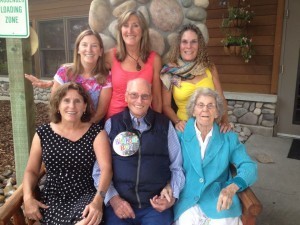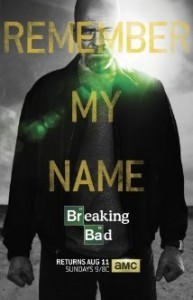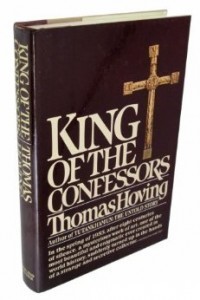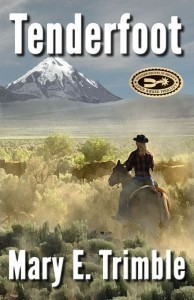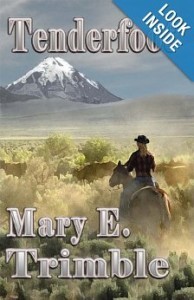Carol Anita Ryan's Blog, page 3
December 21, 2013
Homeland Finale: Truth & Lies
“Saul, can’t you believe anyone”?
That’s Carrie—main character in season final episode of Homeland—pleading with her CIA director-boss. That might be the sentiment driving the story (as well as real life) these days.
In the show, murky quasi-legitimate groups commit heinous crimes in the name of anti-terrorism. No one can be trusted. Primary players are often not employed by the agencies for which they perform. Plots and counter-plots are hatched unofficially. At one point Carrie asks her boss to rescue Brodie (who has just committed a cold blooded murder in Iran), by engaging Amnesty International. She is so driven by the ends justifying means, that the absurdity of her request escapes her.
Is this fictional world far off the mark from reality? A high level EPA official was just sentenced for skipping work for years because he convinced the world’s most gullible boss that he was on a secret CIA mission in Pakistan. The fact that someone would believe and support such a lie says a lot.
Meanwhile, in the fictional Homeland, Saul has been setting up a counter-intelligence plot in Iran for months. In the final episode, the real life breakthrough in relations with Iran (to begin discussing uranium enrichment) was deftly folded into the plot. Who knows, maybe some haywire plot was involved in real life. The point is: no one can be trusted.
Homeland explores the realities of the anti-terrorism and end justifies means world we find ourselves in. It is alarming, but mesmerizing TV.
December 9, 2013
Coming-of age while pretending to read Rilke
Every once in a while the author of ‘The Girl Pretending to Read Rilke’ stopped me in mid-sentence. Sometimes it was an eerily accurate description (of an army-surplus store, for example: ‘smells of slightly moldy canvass duffel bags and new cotton’). Sometimes it was an observation of an obscure emotional state easily overlooked. Sometimes it was a laugh out loud scene. Usually, it was a moment of recognition. Things I’ve experienced but not thought about in decades, if at all. Those are the things that make good fiction writing.
This novel is about a female science student working in a lab at Harvard in the summer of 1963. She is gifted, but diffident at the beginning of a tumultuous summer and by the end of the story she is much wiser. The author, Barbara Riddle, manages to provide enough specifics about that time and place without making the book limiting. I attended college at the opposite end of the same decade and I was a social science major. Still, so much of the heroine’s experience was familiar to me and to anyone coming-of-age. The story develops easily—I finished the book in two enjoyable sessions. The writing is flawless and never gets in the reader’s way.
November 28, 2013
A Great Mom Makes a Difference
In the early 1950s, the land on the Maryland side of the SE border with Washington D.C. was heavily forested, and completely undeveloped. In colonial times there had been farms, perhaps plantations; but they were abandoned and by the 50s there were only forests. Our brand new house was on the leading edge of development. We were on a short dead-end street abutting the woods, but only a quarter mile from the D.C. border. Being the early 50s, there were only non-white people in D.C. In Maryland, our suburbs surrounded by the woods contained only white people. Thinking of it now, it sounds claustrophobic, but at the time it made for a close and safe feeling neighborhood. As kids we didn’t reflect on the sociology of the setting. We just enjoyed the delights of playing in the wild, untamed area beyond our houses.
One of the luckiest things about my early childhood was living across the street from my friends, Nancy and Barbara. Before I was five, I had already discerned the relative merits of the moms on our block. In those days, all the kids on the block played together. I noticed that Mrs. Betty Miller knew the games and songs of childhood. She was always patient and loving to a house full of noisy neighborhood kids. She had the knack of knowing how each child in the group should be treated. We all got the benefit of her personal attention. Looking back, I see how she quietly led the other moms in the neighborhood, by her example. My mom was wonderful, but she wasn’t very patient, and she just didn’t know the games we learned from Mrs. Miller. This was before TV and Sesame Street. Games were important to preschoolers!
By the time I started school, the Miller family had moved away. Mr. Miller was an officer in the Air Force, and was posted all over the world. Over the years we got Christmas letters from exotic locations. In each new job posting Betty Miller created a home for her family (which later included daughters Jane and Carol). She must have bought and sold so many houses and packed and unpacked tons of household items. Despite all the moving around, my mom and dad remained life-long friends of the Millers. Of course, in those days at least, that was because the wives liked each other and made the effort to stay in touch.
When I was grown-up and living in Seattle, Mr. and Mrs. Miller moved there. My parents had a chance to reconnect with Betty and Bob, and I got to see their daughters, my old friends, as adults. It was wonderful to reconnect after so many years and so many miles!
I know Betty Miller must have enriched the lives of everyone she knew. She did everything with uncommon grace. She recently died after a long and well-lived life. She will be missed.
November 17, 2013
A Very Low-Cost Hawaiian Vacation
I’ve said it before, but it’s worth repeating: When you are in the mood for a romantic mystery, without question, Cindy Sample is a go-to author. This is the third book in a series (Dying for a Date and Dying for a Dance, being the first two, but you don’t need to read the books in order). In Dying for a Daiquiri the heroine (a forty something divorced working mom) gets caught up in a murder investigation while innocently attending a wedding on the big island of Hawaii. A series of murders occur around her. Reading this book was like taking a mini vacation on the lush island of Hawaii. At times funny, at times thought provoking (who the heck was murdering people in paradise, and why?) the book always reflects the challenges of a mid-life divorced woman. Here she is with her mom and brother and friends who are getting married, but she is not yet seriously involved. How do you cope in a romantic setting like that? There are some laugh-out-load moments amid the bird-of-paradise picture perfect scenery. It’s a light-hearted refreshing read.
October 31, 2013
Don’t Have a Stroke–Read About It!
In ‘My Stroke of Insight’ Jill Taylor, a neuroscientist with a PhD, details from a scientific as well as a personal point of view what it was like to have a massive stroke. Her particular stroke destroyed part of the left side (speech and logical thinking) of her brain. Before her stroke at age 37, she was at a high point of her career and she would have known all about what was happening to her. She wrote the book after her painfully difficult recovery which took eight years.
She was lucky to have professional friends and family who helped her through an almost super-human effort following her stroke. It’s important to realize the difficulty of rehabilitation following a stroke.
After a few years of primary progressive MS my symptoms were stroke-like. My left side of my body was extremely week. I struggled to walk with a cane and a leg brace. My Doctor sent me to a state-of-the-art stroke rehabilitation program for two intensive weeks. It was multi-disciplinary, it was comprehensive, and it was exhausting. Imagine trying to make your earlobes bend. That’s what it seems like you’re up against when you try to find new pathways in your brain. I have enormous respect for what Jill Taylor has accomplished. Few people could do it.
Jill Taylor has managed to recover much of her pre-stroke former brilliance. It is inspiring and informative to learn what she went through. I have a few problems with her writing style and with some of her insights. But, they are minor compared with the book as a whole.
October 14, 2013
Breaking Bad in the desert
Ancient literature (at least the surviving part) is always about good and evil. Whether ancient Greek dramas or Sanskrit poems the quest to understand human behavior has always been fascinating.
In college I learned of the tradition in Asian cultures of all night performances—sometimes over several nights– of dance or sophisticated puppet-plays recounting parts of the Ramayana. It impressed me that whole cultures would focus on stories that illustrated matters of morality. The stories had all the elements of great drama- a sensational story with vivid characters doing super human feats. I was frankly jealous that we seemed to lack a modern equivalent.
In Breaking Bad, we’ve found our own morality play. Many of us binge watched the series leading up to the final episode—which like the good old days before cable TV—we set aside our DVDs and DVRs and watched together as it was first broadcast.
Breaking Bad is sometimes hard to watch. Good people become bad before your eyes: in a variety of ways and for various reasons. Some characters do almost super human feats—which only goes to show that knowledge of science and technology combined with a lack of moral direction can lead to wicked yet amazing results.
The show rips open all strata of life in New Mexico, exposing and illuminating like an adept vulture things you never want to see in person. And yet, the lesson is: it could happen to anyone who isn’t aware of the risk of breaking bad. Walt White started out as a kindly school teacher but he became a monster.
September 15, 2013
Art History Detective
King of the Confessors is the kind of book that might have inspired Dan Brown to write a suspense novel about an art historian. It’s actually a memoir about Thomas Hoving and the museum that employed him in his quest for a work of art. Along the way you learn something of the world of museums and art historians during the early 1960s. Hoving is a successful man of that era (when tall, white men with the right connections unabashedly ruled the world—at least in New York City). It is a long, rather self-indulgent book by today’s standards (a museum curator doesn’t have enough celebrity to be published in hard back today). The story reveals a lot about recovery of art stolen during World War II, and the less than legitimate methods museums used to add to their collections. I enjoyed following Hoving’s research and discovery about the ivory cross. The cross turns out, despite its beauty and craftsmanship, to contain a disheartening coded message.
There are some interesting characters—especially the antagonist, a man of many names—and there are a few unexpected plot twists. However, do not expect a Dan Brown novel!
The book is out-of-print, but second-hand copies are available through Amazon.
August 26, 2013
Tenderfoot review –Love and the Volcano
There is a new eBook edition of this novel. It’s available at your favorite online retailers (including Smashwords) for only $2.99!
In Tenderfoot Corrie Stephens, a writer researching rural life in 1980 happens to wind up—because of a dismal sense of direction –on a cattle ranch northeast of Mount St. Helens. As luck would have it, she arrives shortly before the explosive, deadly volcanic eruption. Her research brings her into contact with J, a hunky widower who owns the cabin she’s renting. While you might think two good looking, single main characters might get together right away; not so fast! The story expands on those real-life impediments to mid-life romance: children and emotional baggage. We get to know the characters while learning about life on a cattle ranch. But that’s not all! While Corrie and J’s emotions are heating up, Mount St. Helens is simmering too. A newspaper writer and a photographer’s coverage of the awakening mountain is an important subplot. Corrie is on the mountain with her friends when the massive eruption occurs. The story gives you a visceral feeling of what it must have been like to barely escape alive from the eruption.
The author’s earlier books have been coming-of-age novels set in eastern Washington. Tenderfoot features a mid-life divorcee as the main character. Even though Corrie has been married for years and has a grown daughter, she experiences falling in love again like a school girl! Mary E. Trimble is unmatched when it comes to portraying the emotional journey of a pure-hearted female (of any age) falling in love. Tenderfoot is a good story. It’s full of well-researched fascinating facts about ranching and the eruption of Mount St. Helens. It’s a book anyone can enjoy since the language and themes are as wholesome as a John Wayne movie.
Love and the Volcano
In Tenderfoot Corrie Stephens, a writer researching rural life in 1980 happens to wind up—because of a dismal sense of direction –on a cattle ranch northeast of Mount St. Helens. As luck would have it, she arrives shortly before the explosive, deadly volcanic eruption. Her research brings her into contact with J, a hunky widower who owns the cabin she’s renting. While you might think two good looking, single main characters might get together right away; not so fast! The story expands on those real-life impediments to mid-life romance: children and emotional baggage. We get to know the characters while learning about life on a cattle ranch. But that’s not all! While Corrie and J’s emotions are heating up, Mount St. Helens is simmering too. A newspaper writer and a photographer’s coverage of the awakening mountain is an important subplot. Corrie is on the mountain with her friends when the massive eruption occurs. The story gives you a visceral feeling of what it must have been like to barely escape alive from the eruption.
The author’s earlier books have been coming-of-age novels set in eastern Washington. Tenderfoot features a mid-life divorcee as the main character. Even though Corrie has been married for years and has a grown daughter, she experiences falling in love again like a school girl! Mary E. Trimble is unmatched when it comes to portraying the emotional journey of a pure-hearted female (of any age) falling in love. Tenderfoot is a good story. It’s full of well-researched fascinating facts about ranching and the eruption of Mount St. Helens. It’s a book anyone can enjoy since the language and themes are as wholesome as a John Wayne movie.
August 23, 2013
Bookblast blog
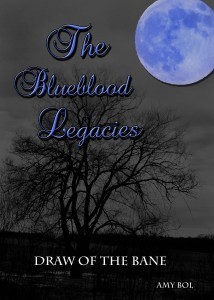 Today’s blog features a book by Amy Bol.
Today’s blog features a book by Amy Bol.
Amy Bol grew up in Twin Lake, MI. She met her husband, Bryan Dykes, on vacation during her second year of college and moved to Virginia Beach to help him battle Hodgekins disease. Cancer free, the couple went on to have two daughters and eventually return to Twin Lake to raise their young family in her hometown.
Bryan was diagnosed with stage 4 esophageal cancer in April 2008 and he died three short months later. Her first book, a memoir of non-fiction, short stories entitled “Complements of a Dying Man,” started out as a test to learn how to upload her work onto Amazon. The book is currently rated five stars and was described as both humorous and heartfelt.
However, her guilty pleasure is writing adult paranormal romance. Draw of the Bane, the first book in The Blueblood Legacy series is her first novel. She is currently at work on the sequel Rise of the Red Wolf. She lives with her fiancé, Nick, and her two stubborn, strong, and infinitely amazing young daughters.
Email: amybolwrites@gmail.com
Twitter: @amybolwrites
The Book:
Mila was use to life on her own. She was done running, and fully expected to face her past alone and on her own terms. That is, until Landon wandered into her life and changed the terms. Now, together, they face a common enemy, one that neither can run from forever. For, even as her enemies exist a continent away, the draw of the Bane in her blood will bring them only a heartbeat from her. But it was the heartbeat beside her that pounded the loudest, and the one that could be her undoing…
“So deep was the fine design woven into the very fabric of their blueprint, so precise and sharp were the instruments of Mother Nature, that the danger came not in the divine intention of their form, but in the commune of their unnatural numbers. Dens that size don’t exist in nature for a reason. Yet, here one came…”
“He was the kind of man that if you saw as a stranger in a room, you allowed yourself that one fleeting moment when you imagine you’re flat on your back and pinned firmly beneath him.”
This is an adult book and is not recommended for young readers.
PURCHASE LINK
Amazon Amy will be offering The Blue Blood Legacies “Draw of the Bane” for .$99 today ONLY (August 22)



